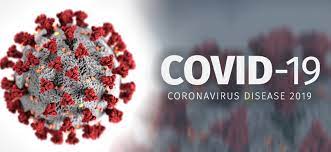- 19 containment zones established in 8 districts containing population of about 25000
- High risk patients with co-morbidities will not be admitted at COVID Care Centre
- Civil Surgeons to ensure that CCC must have a dedicated Basic Life Support Ambulance (BLSA) equipped with sufficient oxygen
- 8,40,223 persons surveyed under Ghar Ghar Nigrani Campaign
Chandigarh, June 23:
In a bid to curtail spread of corona virus in specific areas, Captain Amarinder Singh led Punjab Government has implemented a stringent containment strategy under which 19 containment zones have been established in 8 districts containing population of about 25000, so far.
Giving details, the Health Minister Mr. Balbir Singh Sidhu said that in urban areas, containment zones are clearly demarcated as a street or two adjoining streets, a Mohalla or a residential society. Containment as well as micro containment zone is depending upon the total number of the COVID-19 cases in specific area so to ensure the proper utilization of man power to conduct the activities such as screening, tracing, testing and counseling of all high risk contacts. He said that in the rural areas, it can encompass the whole village or be limited to a part of village. The principle underlying this detailing is to focus on effective containment of smaller/limited areas. Early identification has proved successful in containing the spread of the infection. Thus the whole population in the containment areas is screened regularly and all possible suspected cases of COVID-19 are tested and positives shifted to isolation centers.
To ensure the safety of high risk patients, the Minister said that instructions have been issued to the Civil Surgeons that high risk patients those aged more than 60 years or those with co-morbidities like diabetes mellitus, hypertension etc will not be admitted at COVID Care Centre (CCC). No Level-I & Level-II patients to be admitted at Level-III facility. Patients at the CCC will be shifted to the Level-II facility only if indicated according to the referral criteria already issued. Every COVID Care Centre must have a dedicated Basic Life Support Ambulance (BLSA) equipped with sufficient oxygen support on 24×7 basis, for ensuring safe transport of a case to Dedicated higher facilities if the symptoms progress from mild to moderate or severe. He also said that patients with no symptoms or mild symptoms will be taken care of at level-I (CCC).
Revealing about the “Ghar Ghar Nigrani” campaign, Mr. Sidhu said that the door-to-door survey is undertaken with the help of ASHA workers/community volunteers to ensure early detection and timely testing. Through the App, the entire rural and urban population above the age of 30 years is being surveyed. This includes checking for people with co-morbidities and SARI/ILI surveillance. The data generated is being used for risk mapping which facilitates targeted interventions. As on 22nd June 2020, 840223 persons have been surveyed, of whom 836829 were found to be asymptomatic and 3997 with symptoms like cough, fever, sore throat, breathlessness etc. The survey which is still underway has been completed in 5512 village sand 1112 urban wards.

 हिंदी
हिंदी






